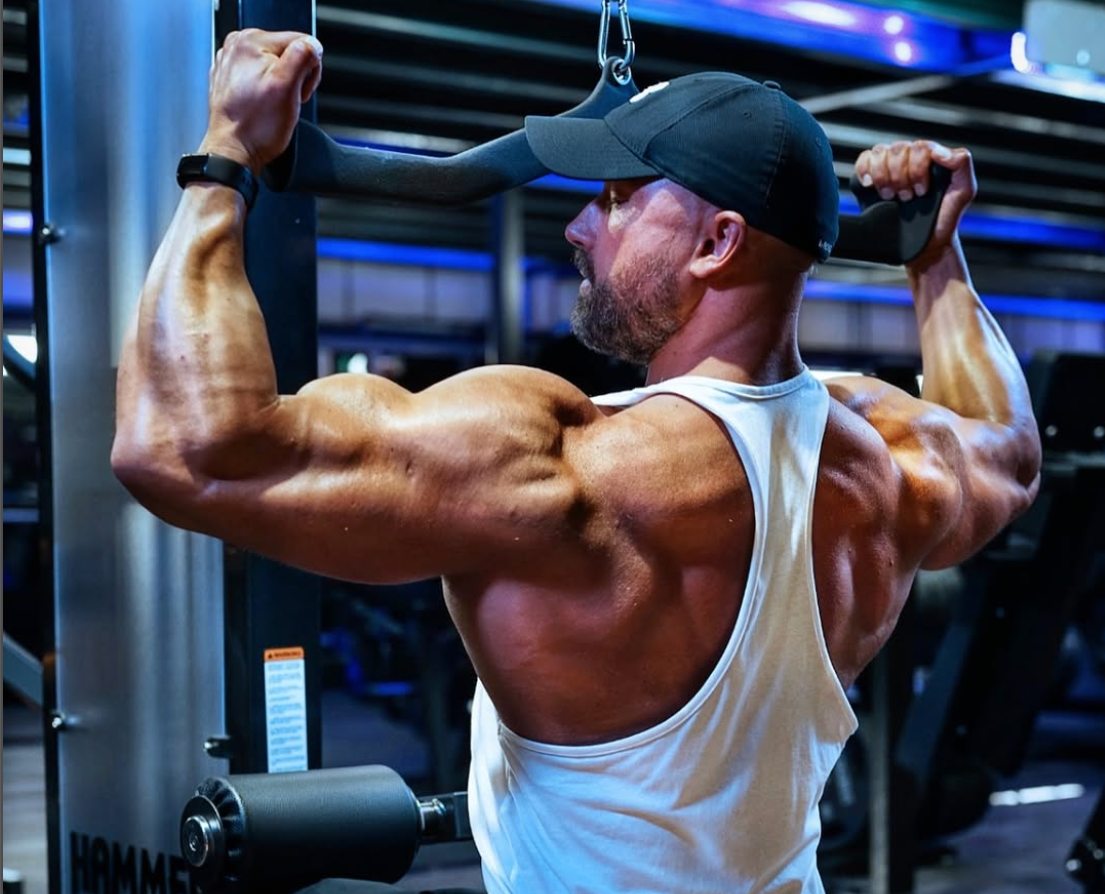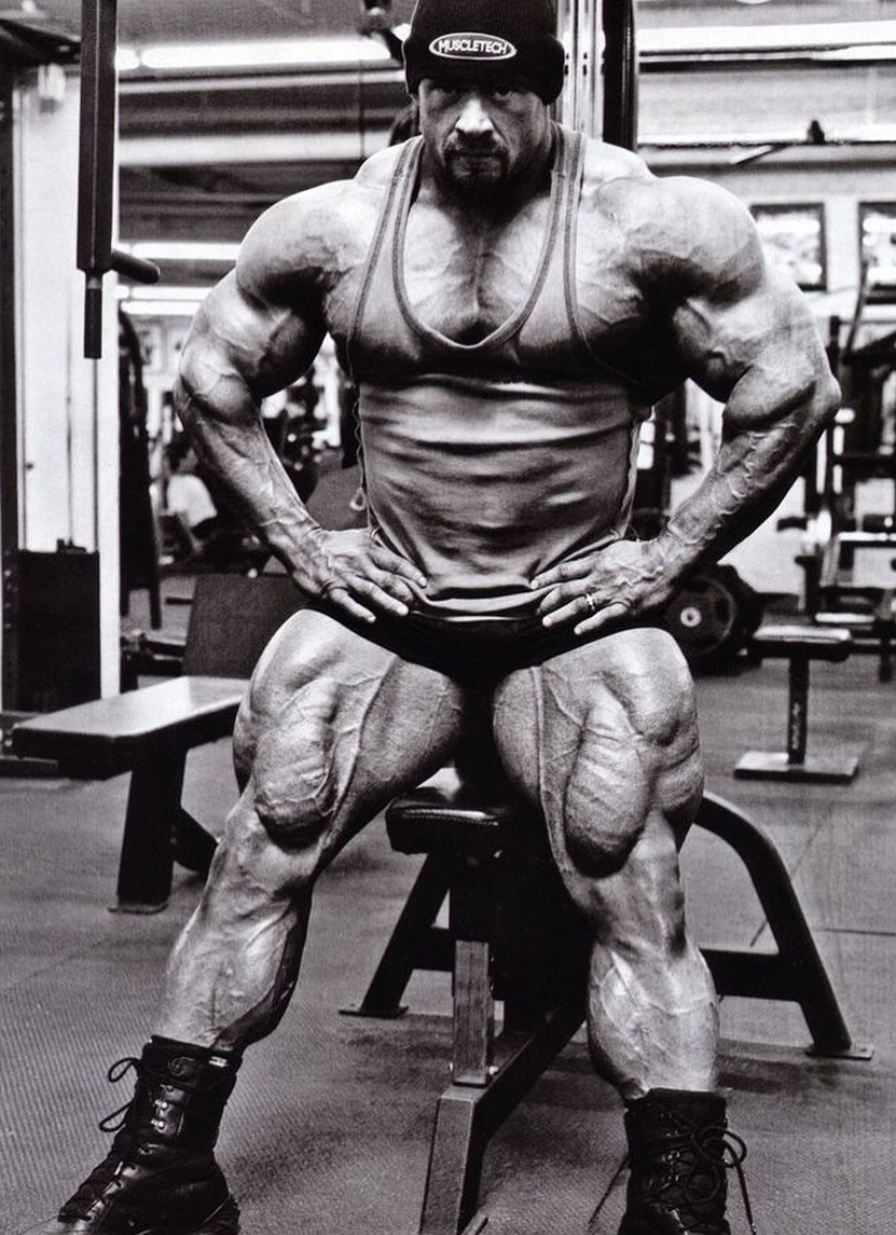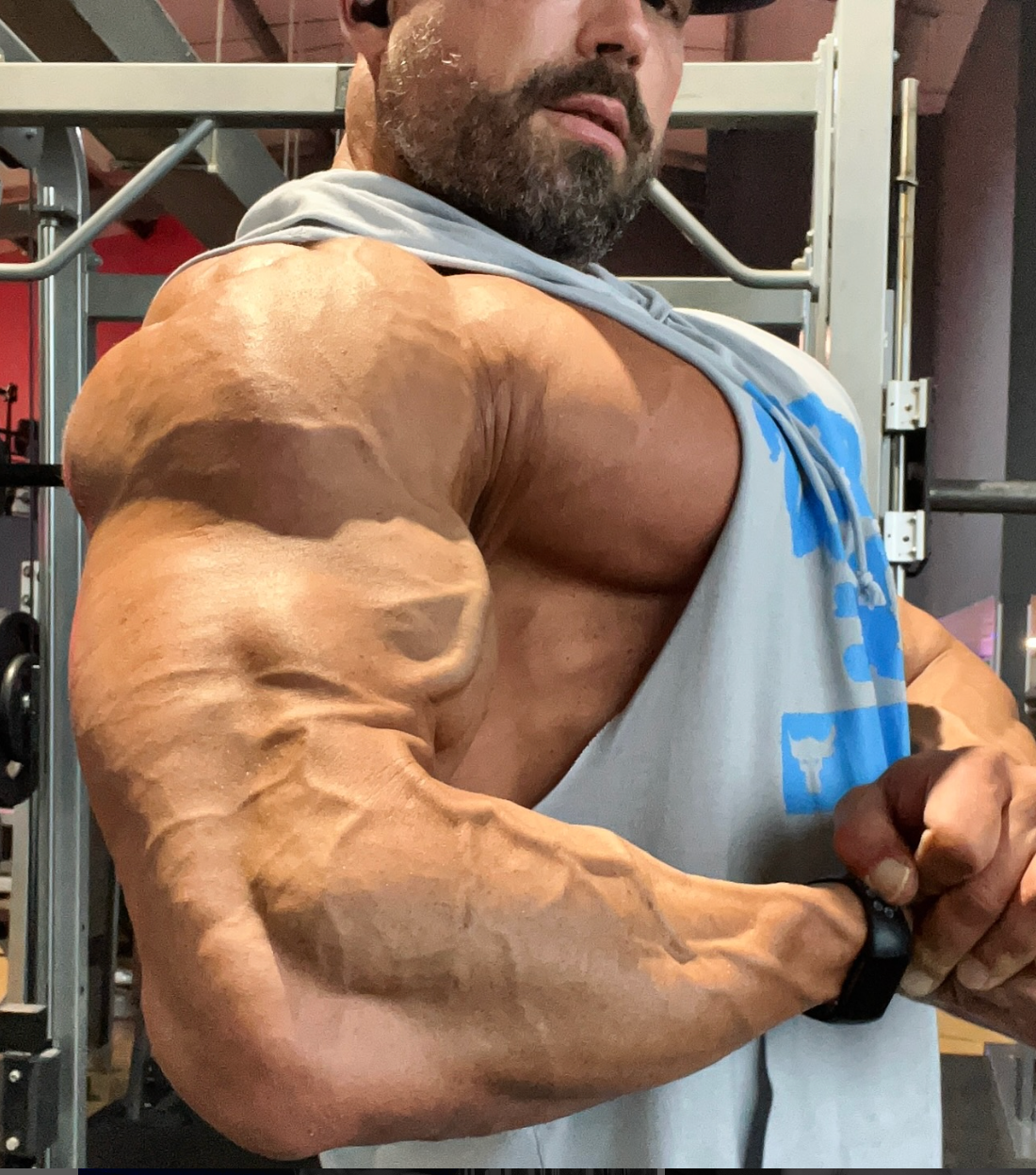
BODYBUILDERS have been debating rep ranges for years. Traditionally, the 6-12 rep range has been seen as the gold standard, delivering solid results for decades. But with studies suggesting that rep ranges from six to as high as 30 can be similarly effective for hypertrophy, there is room to explore how different approaches can impact muscle growth and possibly even the appearance of a physique.
Let's weigh the pros and cons of various rep ranges and apply science and common sense to determine what might work best for you.
At its core, muscle growth (hypertrophy) is primarily driven by mechanical tension. Mechanical tension refers to the force generated when muscles contract under load, especially during eccentric movements. Naturally, heavier loads create more tension, which stimulates the muscle fibres to adapt and grow. This process involves mechanosensors and it is quite fascinating how they work (at least if you're a bit of nerd).
Integrins
Integrins are proteins embedded in the muscle cell membrane that sense mechanical tension. When muscles contract or stretch under load, these proteins detect changes in the physical environment and transmit signals into the cell.
Costameres
Costameres are structures on the muscle membrane that connect the cytoskeleton (the cell's internal framework) to the extracellular matrix (the structure outside the cell). They act as tension-sensitive complexes that help distribute force across muscle fibres and initiate intracellular signalling.

Titin
Titin is a large protein in muscle fibres that acts like a spring, helping muscles resist stretch. It also has mechanosensing properties, detecting tension and initiating biochemical signals that contribute to hypertrophy.
Muscle damage
Controlled eccentric loading and novel exercises can induce muscle damage. This is one of the reasons we ache more when we do exercises we aren't used to. While muscle damage is thought to play a role in hypertrophy, it's generally accepted that this is secondary to mechanical tension.
Metabolic stress
Higher-rep training creates a greater build-up of metabolites, leading to cell swelling. It's thought that this mechanism can lead to anabolic signalling that causes hypertrophy, but this is believed to be less potent than mechanical tension.
Brad Schoenfeld's research highlights the interplay of these factors. While all three contribute, mechanical tension seems to be the strongest mechanism for muscle growth.
Strength development (1-5 reps)
Pros:
• Builds maximal strength through skill and neural adaptation.
• Improves force production, which can enhance performance in compound lifts and more hypertrophic rep ranges
Cons:
• Potential higher risk of injury due to heavy loads.
• Limited total training volume, which alone may not provide sufficient stimulus for hypertrophy.

Classic hypertrophy (6-15 reps)
Pros:
• Provides a balance of mechanical tension and metabolic stress.
• Moderate rep ranges allow for manageable fatigue, enabling consistent, high-quality sets.
Cons:
• Requires careful execution to avoid overloading connective tissues or causing burnout.
• Training only in this range might neglect the potential benefits of other training stimuli.
Higher rep pump work (15+ reps)
Pros:
• Huge pumps. It's fun, right?
• Enhances blood flow, aiding recovery and connective tissue health.
Cons:
• High-rep sets can lead to poor form as fatigue sets in, increasing injury risk or at least reducing the accuracy of the training.
• Less mechanical tension, which limits its effectiveness for maximal hypertrophy.
Two distinct types of muscle hypertrophy appear to occur. Often referred to as sarcoplasmic hypertrophy and myofibrillar hypertrophy. The exact extent to which they can be independently targeted or how much they each contribute to overall growth remains a topic of discussion.
Sarcoplasmic hypertrophy
Sarcoplasmic hypertrophy is characterised by an increase in the non-contractile components of the muscle, such as fluid, glycogen and other cellular elements that support muscular endurance and metabolic activity. This form of growth is often associated with higher-rep, pump-focused training. It might explain the rounder, fuller muscle appearance seen in some bodybuilders. Think Jay Cutler (below).

Myofibrillar hypertrophy
Myofibrillar hypertrophy involves the growth of the contractile elements within the muscle. This form of hypertrophy is often linked to heavy, lower-rep training that maximises mechanical tension. Within bodybuilding, those who favour heavier training appear to develop muscles that appear harder and denser, potentially reflecting more myofibrillar adaptations. Think Branch Warren (below).
While these concepts help explain observable differences between training methods and physiques, they shouldn't overcomplicate programming.
Both sarcoplasmic and myofibrillar hypertrophy contribute to muscle size and it's likely that no training method targets one exclusively. Most resistance training programmes promote both to some degree, though the emphasis may shift depending on the rep range, load and rest intervals.
Sticking to tried-and-true rep ranges (eg, 6-15) and progressively overloading the muscles is a proven strategy for building size and strength, regardless of the underlying mechanisms.
Through experience and common sense, you’ve likely noticed that different exercises may lend themselves better to specific rep ranges. In general, with hypertrophy as the main goal, compound exercises might best be performed in the 6-12 rep range, where mechanical tension is maximised, but cardiovascular fatigue doesn't compromise form and, therefore, effectiveness and safety of training.
Certain isolation exercises can be effective at higher reps (12-15+), where it's important to minimise joint strain. For example, heavy sets of six on lateral raises or calf raises may not be practical or safe. It's also thought that calves and shoulders often respond well to higher reps due to their high proportion of slow-twitch fibres.

Incorporating all rep ranges strategically can benefit your training by offering variety and stimulating growth through multiple pathways. You can be big and strong!
1-5 Reps
Helps build maximal strength and, therefore, bragging rights (who doesn’t want to be strong?)
6-12 Reps
This rep range seems to be the bread and butter of muscle growth.
Let's face it: the judges (or the chick at the beach) don't care what you can bench; they just want to see impressive pecs!
15+ Reps
Great for getting skin-splitting pumps, accessory exercises, calf and shoulder training, or connective tissue health.
Building muscle doesn't need to be overcomplicated. The optimal rep range for most bodybuilders lies in the 6-15 rep range, where the benefits of the main mechanism that promotes growth (mechanical tension) can be obtained. Progressively overloading in this range is almost certainly the best approach for hypertrophy.
Don’t miss the forest for the trees
This article has focused on rep ranges. However, it's worth pointing out that, regardless of whether you are aiming to hit six reps or 15 reps on any given set, progressive tension overload should be the main focus when training for maximum hypertrophy. And that requires consistency and hard effort in all aspects of bodybuilding which, as well as training, include adequate nutrition and recovery, as they are also the drivers of success in bodybuilding.
Then, there is the question of volume.
How many sets should we be doing?
We will leave that discussion for another day!

About the Author
Alan Carson is a competitive bodybuilder and certified sports nutritionist based in Worcestershire. Competing since 2014, Alan secured the PCA British Masters Over 40s title in 2023 after returning to the stage following a four-year break. Alan works closely with a select number of clients, blending his expertise in nutrition, bodybuilding training and psychological aspects to help them reach peak potential both physically and mentally. With a passion for transformation, he's dedicated to helping clients improve their health, performance and physiques.
Read Alan Carson's previous columns HERE.
Leave a Reply